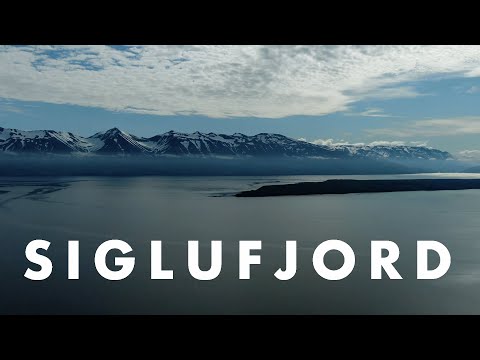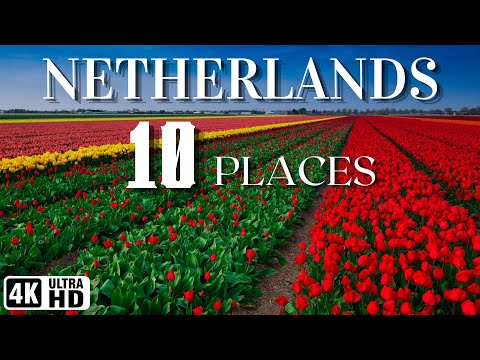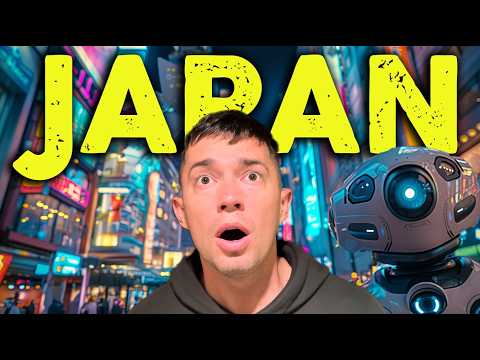SIGLUFJORD: The HERRING CAPITAL of the world & Arctic Bow Scenic Drive

(atmospheric music) - In the real north of Iceland, there is the Troll Peninsula. A place that has been nearly forgotten over the last decades, but now started to bloom again. Explore the remarkable Arctic Bow scenic historical route with me.
Visit the herring capital and the second biggest town of Iceland. (gentle guitar music) Today's the earliest day so far. We are taking off here and we have as well a pretty long day, I think 350 kilometers. We don't know how the roads will be. We bought a little breakfast yesterday and so we are ready to go. Weather's not as good today.
It started with rain when we woke up, but now it's not raining anymore, but just you can see it's just well, not pure sunshine. (upbeat music) Goodbye, Hólmavík. Your lovely little town was really, really nice to stay here. We took off from Hólmavík around 6:00 AM because the travel partner and me both love morning rides when nobody else is around.
And due to Iceland being so far north, the sun during the summer months already rises between 3:00 or 4:00 AM in the morning so it's the perfect place for long riding days. (gentle music) We got up so early today, but I don't know if it was the right decision, eh? It's really lovely to be the only ones on the road, but the wind today is crazy and it's actually freaking cold. And these aftermarket heated handlebars I have here on my Ténéré are actually not the best, if I'm honest. So I am really, really freezing.
(gentle guitar music) The morning ride took us always along the coast over some perfect asphalt roads that turned into very well maintained and easy to ride gravel in between, before becoming a perfect asphalt road again. (gentle music) Oh my God, I am so hungry. I think we need to stop now, maybe here at this church. I hope the travel partner turns off here.
You know, we don't have any intercoms so we need to rely on our supernatural connection to feel what the other one needs. Yeah, and he does. (gentle music) (gentle guitar music) Opening the treasure box.
What do we have? - [Travel Partner] Breakfast bread, please. - Cream cheese, tomatoes. (bright music) So that's our delicious breakfast and we are next to a nice church to be protected from the wind, but it's still very cold. It's so freaking cold now and so windy. We just had breakfast at this church on the walls to get a little bit away from the wind. We both put on more clothes now, warm at last, and yeah, oh, terrible cold weather today.
I feel like there's one thing we're fearing every day and that's the bad weather. It's like literally, I think I've never thought so much about the weather like on this trip because you're just like, it would, it ruins the day so much if you can't see the amazing landscape. Plus the worse the weather, the more cold it gets. And that gets really like borderline for riding a motorcycle because even good weather, it's like 10 degrees to max 15 degrees Celsius. And when the weather switched bad, it's like five or even worse, it can even snow.
The cold is definitely your biggest enemy. And as well, your biggest challenge here in Iceland. (gentle guitar music) We had now entered the Arctic Bow scenic route.
The Arctic Bow is a remarkable 184 kilometer scenic and historic route that basically stretches along the whole coast of Tröllaskagi, the Troll Peninsula, on the north coast of Iceland, stretching from Varmahlíð in the west to Akureyri in the east, passing through the recently built 11 kilometer long tunnels between the towns of Siglufjörður and Ólafsfjörður. The construction of these several tunnels has made Siglufjörður, Iceland's most northern town, more accessible in the recent years. And on the way north there is not only the lovely landscape to enjoy, but also several sites and other small towns. (gentle music) Here we stop in this little town. It's called Hofsós also, and we just wanted to pay it a little visit because it's supposed to have a fantastic swimming pool.
But I think I might skip the swimming, even though it's probably super nice to get into some warm water. But I think I might be even more cold afterwards when getting back on a bike. So, I am too cold to swim in the warm water. (gentle music) Hofsós is the town to visit at the west side of the Troll Peninsula that offers views over the deep Skagafjördur. And the spring pool is indeed its main attraction.
This outdoor pool is above the sea edge, so it creates an illusion of being an infinity pool. That's why it's been lately popular among tourists. Hofsós has furthermore a small harbor and there are a few more sites waiting to be visited just outside of town.
So we made a little stop in the small town here. (Lea laughs) It's actually so cold and windy that I don't even want to put off the helmet, not get completely cold. And now we already drove by a church that I wanted to see, that's supposed to be a super special church. So we have to go back now to see the church, and then continue to our goal of the day. (gentle guitar music) (atmospheric instrumental music) So the church should be somewhere here in the valley.
Let's see. (atmospheric instrumental music) I don't know, but it seems like you are allowed to drive through here. Mm, at least I hope so. Actually, now, I'm not so sure as the people here are walking, but here it looks like a parking. (gentle music) Originally constructed in the late 17th century, the turf church known as Grafarkirkja is the oldest Christian church in Iceland and also the oldest turf church.
Icelandic turf houses are timber structures with turf walls and turf as a cover for the roof. They have been constructed since Iceland was settled in the ninth century and were the product of a difficult climate, offering superior insulation compared to buildings only made of wood or stone. And the relative difficulty in obtaining other construction materials in enough quantities. Grafarkirkja is also one of the very few churches to feature any sort of ornamentation. The 17th century construction that remains today is thought to be the work of a wood carver named Guðmundur Guðmundsson.
He was so famous in his day that his name survived down the centuries, along with the unique woodwork. For decades, the church was used as a tool barn until the National Museum of Iceland had the structure entirely rebuilt to its original condition in 1950. Travel partner is doing what he likes best, sightseeing. So what you thought about the church? - [Travel Partner] Very nice, well worth the walk. - It's a nice architecture, no? - [Travel Partner] Very nice.
- And then reality - [Travel Partner] Nice, very smart. - I think it's nice. From here it's another about 60 kilometer ride to our destination for today where we pre-booked a hotel room this morning. And the town we are going to is called Siglufjörður. ("I Remember You") ♪ I remember you ♪ ♪ Every time- ♪ (sea birds caw) (boat engine rumbles) Siglufjörður or Sieglu is Iceland's northernmost town and grew up around one of Iceland's most picturesque natural harbors at the heart of a narrow fjord beneath towering mountains.
The once deserted fishing town, in the recent years, has been blooming again. A mere 24 nautical miles from the Arctic, the once isolated fjord is now easy to reach with newly opened road tunnels connecting it to the rest of the Troll Peninsula Arctic Bow. Few Icelandic towns have such a rich historical background as Siglufjörður does.
Today we get out of the Westfjords and drove to Siglufjörður. The landscape here is a bit different. It's more, it's not as dramatic anymore as in the Westfjords, but I was already expecting that. Siglufjörður is a very nice little town though. It's very historic. I think there's lots of things you can learn.
There's a museum about the herring industry and I always think that's part of traveling and part of being on the road too. Not only seeing how things are now, but as well understanding where things have coming from and learning a little bit about the history of a place. At least for me, that's important and it makes you understand how things developed and why they are like they are today.
In the booming days of the herring era, Siglufjörður was dubbed the "Herring Capital of the World." In the center of the town you today can relive this history in the famous and fantastically curated herring museum. For many years, herring fishing was the mainstay of the community in Siglufjörður, and it was once the fifth largest community in Iceland. In the 1960s, the big decline of the town started though. The herring left and so did most of the workers and people.
So this here was the most famous town for herring fishing, back those days. And we're gonna visit the Herring Museum now. The Herring Era Museum in Siglufjörður is one of a kind in the world and it is based in several partly historical buildings. One of the museum buildings is located in Róaldsbrakki, a former Norwegian salting station built in 1907. The brakki in itself is a monument to the Norwegian influence in the Icelandic herring industry. And inside you can learn everything about a production of herring from catching to salting.
("A Gal I Know") In the upper floor levels, you feel like walking directly back in time. The brakki has been left largely in its original state as the lodging for dozens of herring girls who worked there during the summers. You can also view the office of the Herring Speculator, the management office for the salting station and employees.
The second building is called the Grána, a meal and oil factory. And the exhibition is about herring fishing as an important chapter in the economic and social history of Siglufjörður and Iceland. The boat house was only built in 2004, but the exhibition provides an impression of a typical North Iceland herring port during the period from 1938 to 1954, with 11 original boats of various types and sizes exhibited. (gentle piano music) Good morning, it's a new day of riding in Iceland and after having been to Siglufjörður, the city where we are currently at, we are going to Akureyri, I actually don't know how to pronounce it, which is actually the biggest city outside the Reykjavík area. And afterwards we're going to a lake.
So, it's a little bit of fjord/city ride today. (upbeat music) Off we are, goodbye Siglufjörður. It has been a very nice and interesting stay and off to the next destination. (upbeat music) The route that we are taking at the moment to Iceland's second biggest city here is part also of the Arctic Bow scenic route.
So, I expect quite some nice views here today. The Arctic Bow scenic route is the best way to explore Tröllaskagi, the Troll Peninsula in Iceland's north. Legend told that the last of Iceland's trolls was slayed in a cave in 1764 on this most northern area of Iceland.
The Trallasgarski Peninsula is located between the fjords of Eyjafjörður and Skagafjörður and the landscape turned out to be very different from the other regions of Iceland. Currently there is no recent volcanic activity, and after the deglaciation, beautiful fjords, valleys and peaks that were formed over the years appeared, making Tröllaskagi one of the most alpine looking places on Iceland. (gentle music) (motorcycle engine rumbles) (majestic music) Wow, and now we got this absolutely nice and sunny weather in addition to the beautiful landscape. I tell you guys, sleeping in Iceland can be worth it. Today it's so much warmer and pleasanter ride than yesterday and I don't know if that's because we started much more late today, but it's so nice.
("New Dawn is Rising") ♪ We'll be dancing ♪ ♪ With our hands in the air ♪ ♪ When a new dawn is rising ♪ ♪ Dancing ♪ ♪ Till the break of dawn ♪ We are approaching Akureyri now, which is the second biggest town or second biggest city, actually, here in Iceland. And I actually heard very, very good things about it. But unfortunately we will just check it out and not stay here because I prefer some places closer to nature to stay and I still want to ride a bit further today. We're in Akureyri now, which is actually the second biggest city outside of Reykjavík area, and it's a pretty cute town for that it's one of the biggest cities of Iceland. I show you old town now.
Akureyri is where the Arctic Bow scenic ride starts or ends. With a population of only 19,000 inhabitants, Akureyri is Iceland's second biggest city and is also called the Capital of the North or the Little Big City of Iceland. You can explore all the major spots in town by foot, but Akureyri is still large enough to offer a rich selection of entertainment, art and culture. With its brightly painted wooden houses and cozy cafes, and stoplights in the shape of red hearts, we immediately felt very welcome. But unfortunately we couldn't stay because the next adventure was already calling. Yes, the next adventure is already calling, and the next episode of "Iceland Unlimited" will take us to Lake Mývatn, which is geologically super interesting and one of Iceland's to-dos.
Meanwhile, the Arctic Bow ride inspired me big times. If you guys spot any trolls here on my channel, I would suggest that we send them back to the cave of the Troll Peninsula. If you like this idea and also enjoyed the episode, give this video a thumbs up, comment and tune in again next Thursday when we all got to go. (tune is whistled) (motorbike engine rumbles)
2023-12-30 05:59


